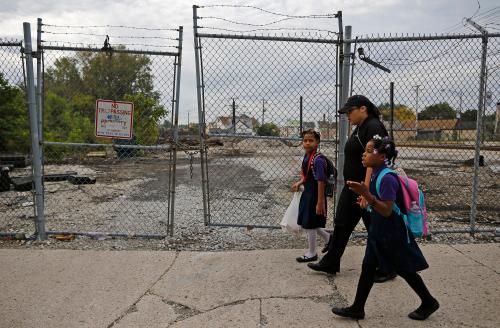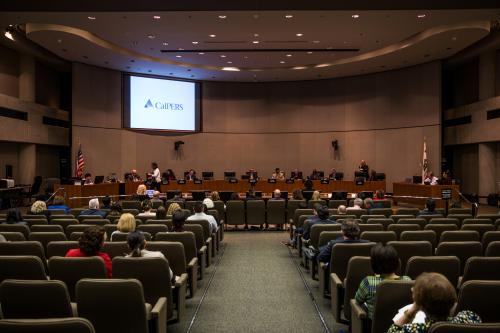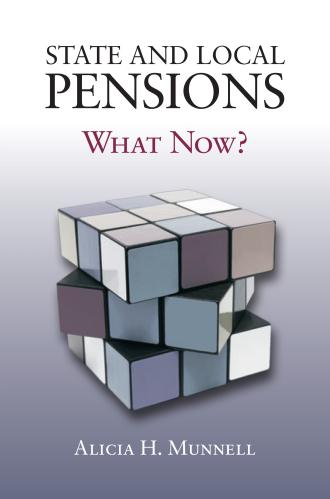INTRODUCTION
The current financial crisis has damaged the finances of many retirees and of employees who were hoping to retire soon, but who now face the need to work for years longer or to accept a pinched life in retirement. Often, they have been relying on the value of investments accumulated in their 401(k) accounts, plus the equity built up in their homes. Unfortunately, house prices have declined by about a quarter and these losses have been multiplied by the leveraging effect of mortgage debt, which helps when house prices are rising, but adds to the harm of falling prices. At the same time stocks and bonds, which make up the great bulk of investments within 401(k) accounts, have plummeted in value.
There is a fortunate group, about a quarter of all employees and a higher percentage of retirees, that is protected by traditional, “defined benefit,” pensions. These are the pensions that normally pay a fixed amount each month for as long as a retiree lives and, in many cases, for the remaining life of a spouse as well. Such pensions can provide a secure retirement, in combination with Social Security — a government sponsored defined benefit plan. The money to pay these pension promises is built up over time by employer contributions to a pension fund plus investment income on those contributions. Any investment losses are borne by the employer and not the employee or retiree. In return, the employer benefits from any investment gains through the ability to reduce future contributions.
However, defined benefit plans do bring one risk that 401(k)’s and other “defined contribution” plans do not: the pension fund can run out of money if its investments go bad and the employer becomes bankrupt and stops making new contributions. The bankruptcies of the automakers Packard and Studebaker in the 1960’s brought home this risk by leaving a large number of employees with very substantially reduced pensions when they retired.
The current massive problems in the auto industry naturally make the public wonder how safe the pensions are for autoworkers this time around. There is good news and bad news on that score. On the positive side, the government created the Pension Benefit Guaranty Corporation (PBGC) in 1974 to ensure that workers would not suffer this way again. On the negative side, there are limits to the PBGC’s pension guarantees that do put the autoworkers at some risk of losing a portion of their benefits. Given the importance of this industry, the situation in the auto industry is discussed in more detail later.
How does the PBGC work? It guarantees pension promises made by businesses, stepping in when a firm goes bankrupt and the pension fund has too little money to meet its future obligations. The PBGC primarily funds itself by collecting premiums from employers that offer defined benefit pension plans and by taking over whatever investments remain in the pension funds of failed companies. In order to keep premiums low, and to discourage employers from offering unreasonably large pensions, there are limits on how large a pension will be insured by the PBGC. These limits are high enough that only certain groups have had their pensions reduced, principally more senior airline pilots and the higher‐paid portion of steelworkers. Members of these groups were paid relatively well and stayed with their same employer for many years, which produces large pensions. Those who retire at relatively young ages, particularly if they were relatively well‐compensated, are also vulnerable to a reduction in benefits. This is the primary issue in the auto industry, where many workers retire quite young.
Unfortunately, the PBGC itself has major financial problems. It currently owes $11 billion more than it has and there are reasonable scenarios under which that deficit could balloon to $100 billion. (A GM bankruptcy alone could add over $20 billion to the deficit, if past relationships hold between what a company’s accounting books say beforehand and the loss eventually experienced by the PBGC.) This is far larger than can reasonably be paid from future premiums or excess investment returns, making an eventual taxpayerfinanced rescue likely. Close observers of the PBGC situation recognize that Congress is extremely unlikely to sit back and let the PBGC default on its guarantees, although it technically could. Retirees and employees have been counting on these promises for years and it could be politically suicidal to disappoint them. However, any rescue is likely to be years away, since, like Social Security, the problem is huge, but distant in time. The pension payments are spread out over decades, meaning it would be well more than a decade before the PBGC ran out of cash, even in the worst case.
This guide is intended to help employees and retirees who have been promised defined benefit pensions to understand the protection provided by the PBGC. It is also intended to help all citizens to understand the potential effect on them as taxpayers if the problems at the PBGC do worsen. The guide is divided into the following sections:
- Background on retirement plans
- Pension funding rules
- Guarantees provided by the PBGC
- How the PBGC works
- The situation in the auto industry
- The PBGC’s financial crisis
- Options to fix the crisis
- Glossary of terms



